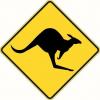I recently purchased the Veritas low angle smoother. The first impression was very positive, build quality is certainly top notch. It's very easy to set the iron and the mouth adjuster works a charm. General feel and usability is pretty good.
But, so far, I really struggle to get the same glassy smooth finish I can achieve with my cheapo 80's Stanley with tightly set chipbreaker. This is on softer woods, douglas fir, pine and also some maple.
I also tried a 40° microbevel (52° cutting angle) but the result was pretty much the same as with a 25° blade. I thought a lower cutting angle was better for softwoods anyway. I tried setting the mouth as close as I could. I sharpen with the veritas guide, I don't use a camber but round the corners slightly.
So, do I basically need a chipbreaker for the finest finish? Or does the LAS only shine with a really high cutting angle for really nasty woods?
Looking forward to your experiences,
Philipp




 Reply With Quote
Reply With Quote






